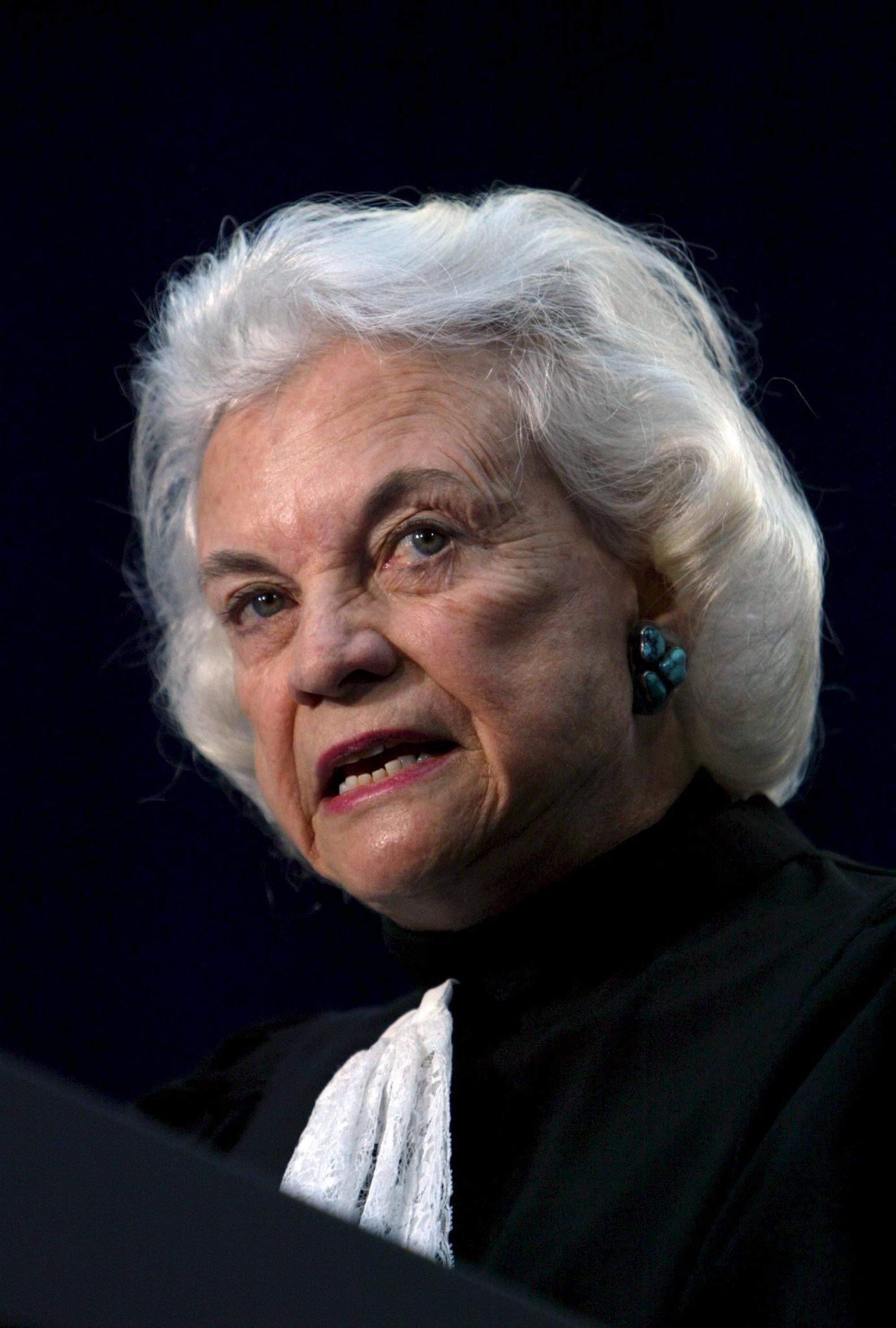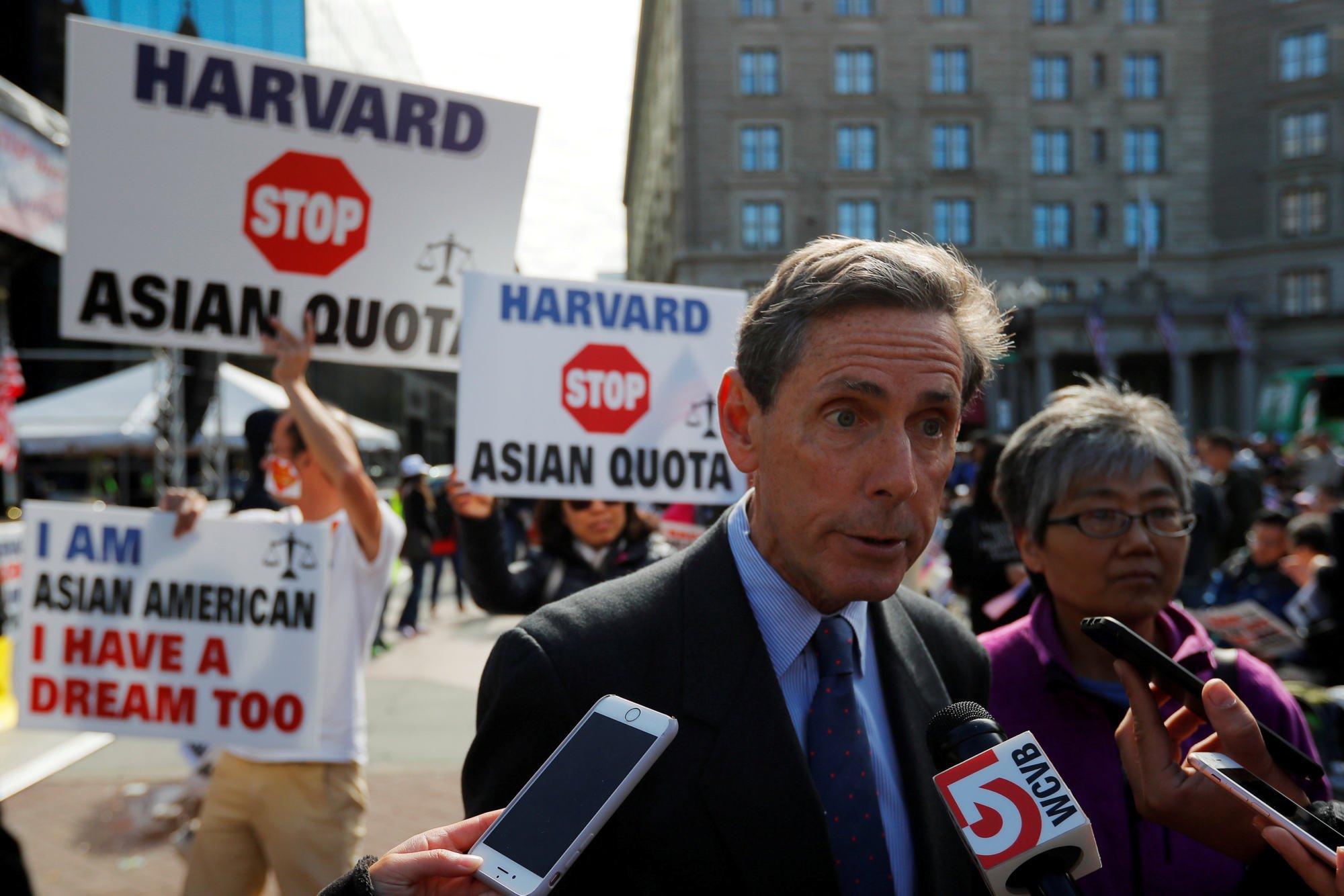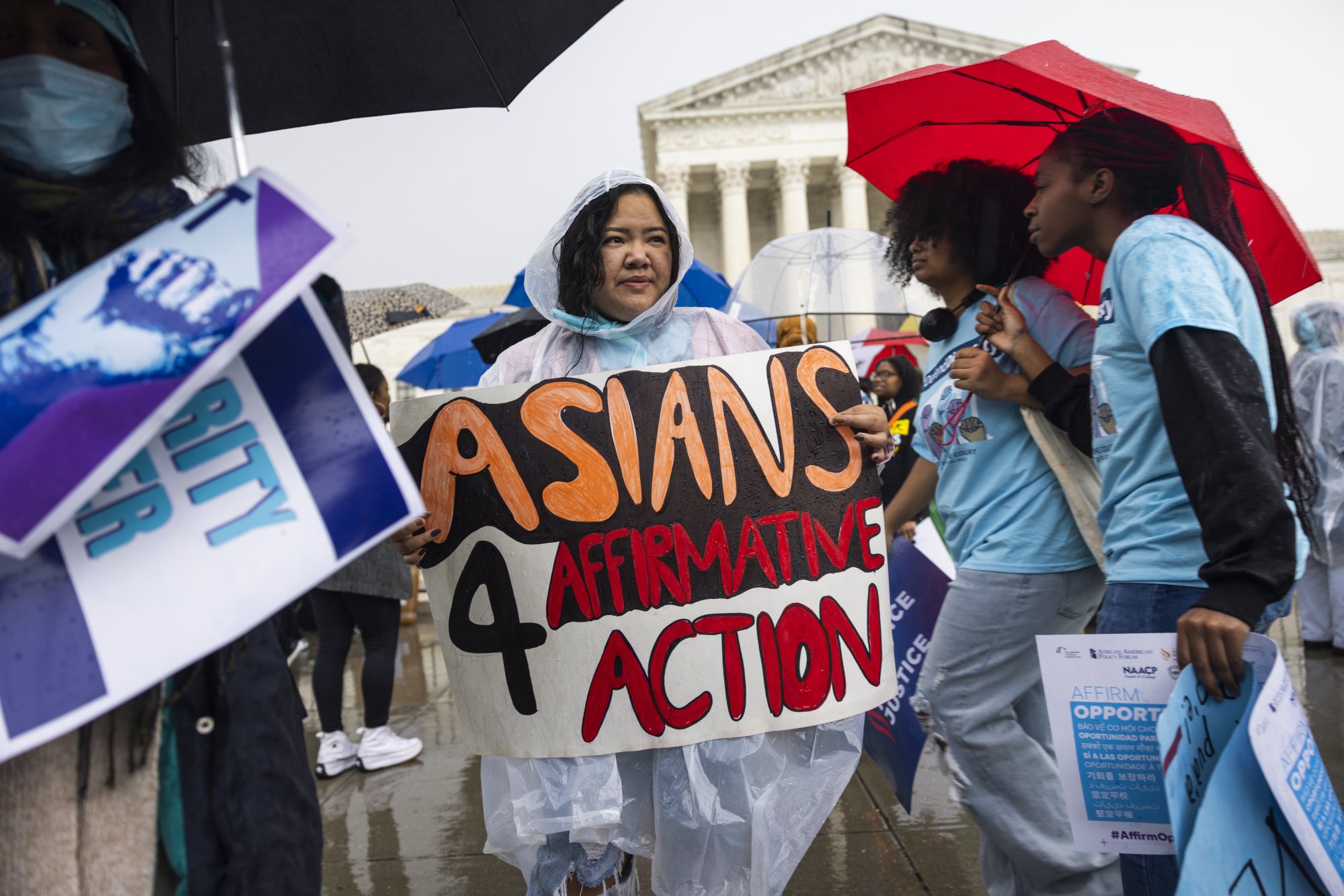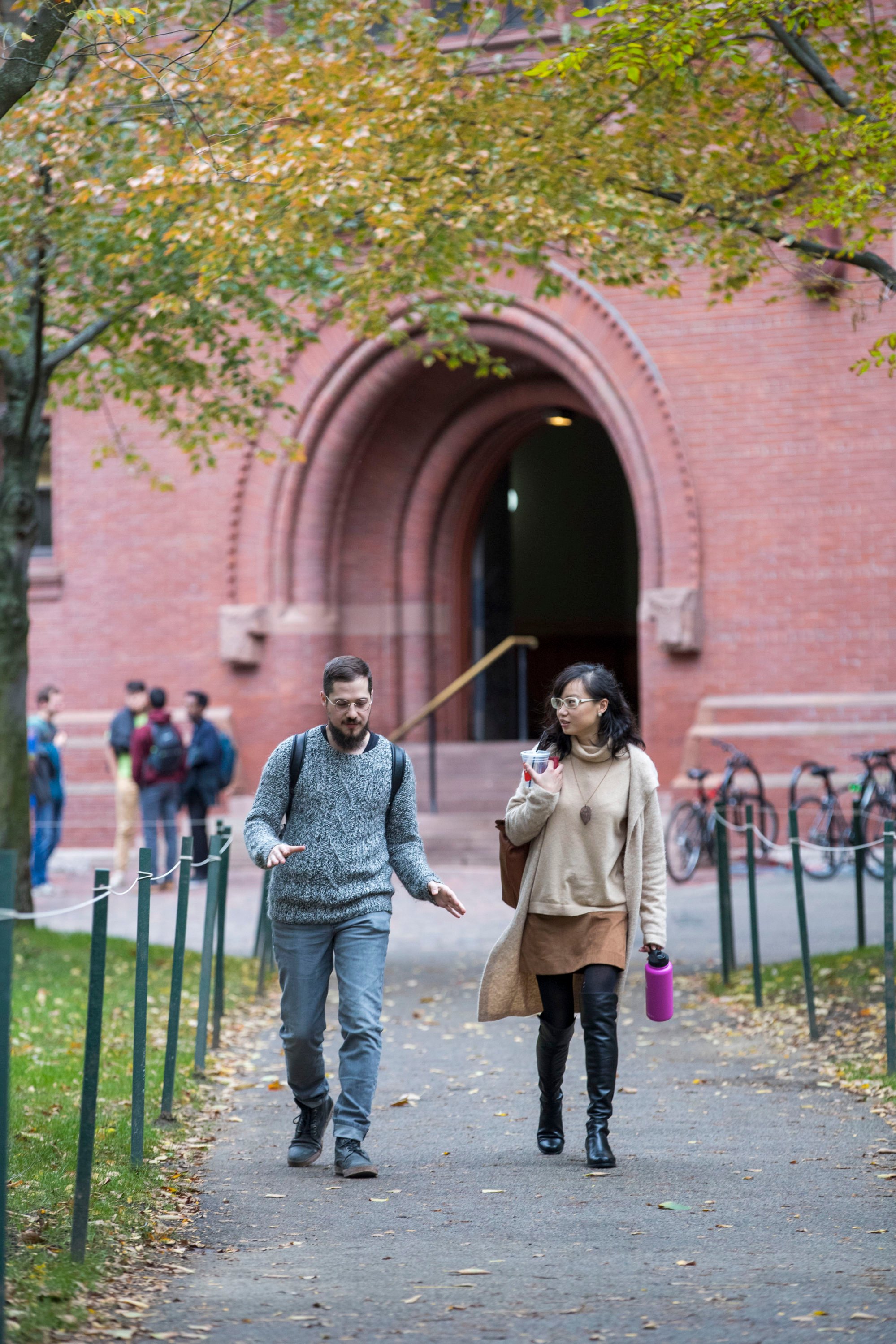“You don’t talk about being Asian. You don’t talk about how your Asianness has othered you,” said Anna Y of Charlotte, North Carolina, describing the advice she got before applying to universities last fall.
This advice came from all over, including TikTok influencers of Asian descent at elite US colleges.
Anna, who has Korean and white parents and will be attending the University of North Carolina at Chapel Hill in the fall, said she was watching the upcoming Supreme Court decisions on affirmative action closely for its impact on Asian-Americans. She also has a 14-year-old brother who will start the college application process in a few years.
Do you have questions about the biggest topics and trends from around the world? Get the answers with SCMP Knowledge, our new platform of curated content with explainers, FAQs, analyses and infographics brought to you by our award-winning team.
This month, the US Supreme Court will issue its ruling on how race can be used in university admissions. The matter has deeply divided Asian-Americans in nuanced ways that can’t easily be captured by polling or partisan lines, and the decision will likely have wide-ranging implications for a process many see as the gateway to success in American society.
‘They want American degrees’: China No 1 provider of overseas students to US
The two cases heard by the court, one against Harvard University and the other against UNC-Chapel Hill, were brought in 2014 by the advocacy group Students for Fair Admissions (SFFA), which argued that racial classifications and preferences cement racial divisions and unfairly disadvantage certain groups. It wants universities to employ “race-neutral” alternatives like socioeconomic status to achieve diversity goals.
Affirmative action, or the practice of preferentially admitting people from under-represented and underprivileged groups, began in US colleges in the 1960s as they worked to undo decades of racism and other forms of discrimination. In 1978, the Supreme Court ruled that colleges could use race as a factor in admissions because diversity in higher education was a “compelling” interest, but could not institute racial quotas.
In 2003, the court ruled in Grutter vs Bollinger – the case at the heart of its current debate – that race could be used as one factor among many in a holistic admissions process. But in what some view as a legally significant deadline, then justice Sandra Day O’Connor wrote in the majority opinion, “We expect that 25 years from now, the use of racial preferences will no longer be necessary to further the interest approved today.”
After retiring from the bench, however, O’Connor said her 25-year timeline “may have been a misjudgment” and that it should not be viewed as a deadline.

Supporters of the practice say that while they would like to see a world where race-based affirmative action is no longer necessary, it’s currently an irreplaceable mechanism for ensuring the benefits of a diverse educational environment. And though the court has ruled that its educational benefits are its only legal justification, most view its chief benefit as addressing the harm of past discrimination.
While both the Harvard and UNC lawsuits focus on the use of race in admissions, the case against Harvard involves an additional question of whether the university intentionally discriminated against Asian-Americans. SFFA contends that Harvard had, and lower courts disagreed.
A key part of SFFA’s discrimination claim is that Asian-Americans receive lower “personal” ratings than other groups. Harvard says that the scores do not make a statistical difference in admissions outcomes and that numbers alone, without additional information, could not prove bias. Harvard also told the justices in October that there was no way any numerical model could account for what the guidance counsellors, teachers and interviewers said, all of which factor into the rating.
But despite Harvard admitting increasing proportions of Asian-Americans in recent years – reaching a record in March – the idea that it and other universities discriminate against Asians permeates the community and has activated previously apolitical groups, like Chinese-American parents.
Asian-Americans divided on Yale affirmative action case
Chunyan Li, a professor at Pace University in New York and board member of the non-profit Asian American Coalition for Education, described how SFFA’s data models have led to students of Chinese heritage trying to obscure their backgrounds and de-emphasise their pursuit of stereotypically Asian activities like math competitions.
As an educator and immigrant, Li said that she valued classroom diversity – particularly “diversity of thought” – but that interventions to address racial disparities should happen earlier, not at the college level.
Asian-American supporters of SFFA, though, aren’t sure what it would take for universities to convince them that the process isn’t stacked against them.
Said Yiatin Chu, president of the New York-based Asian Wave Alliance, which advocates for “merit-based” educational systems: “Something very tangible is that college applications should not include a question on ‘check which box’” to indicate the student’s race.
“All these explicit [racial markers] should go away,” added Chu, a mother of two who immigrated from China in the 1970s.

Anna, like many Asian-Americans her age, is torn on affirmative action.
“I’m not a huge fan because I want to get into college. I want better chances. But at the same time, everyone completely understands and agrees that there has been systematic discrimination and certain policies have to be enacted in order to try and compensate for the differences historically,” she said.
She is also wary of the motives of SFFA’s leader, Edward Blum, a conservative legal strategist. “I can’t make a solid stance on [these cases] because I don’t like Edward Blum or SFFA. He is co-opting the Asian-American struggle for his own ends ... it doesn’t seem like he has Asian interests at heart.”
Students for Fair Admissions has initiated and supported multiple cases against universities for their practices, including Yale and the University of Texas at Austin. Its lawyers say that all they object to is “a consideration of race and race by itself” and that they do not support banning applicants from writing about their race. “An applicant, for example, could write something in which race provides a context for their experience,” they argued in October.
New rules at elite US high school ‘discriminate against Asian-Americans’
But while the group maintains that it fully supports diverse educational environments, their opponents view them as antithetical to that goal.
Said Sally Chen, a Harvard alumna and education equity programme manager at Chinese for Affirmative Action, a San Francisco-based advocacy group: “If you actually look at what they funded or what they have been funded by ... you’ll see that is not at the core of what they are calling for.”
Chen said she was concerned that a decision in favour of SFFA would lead to consequences beyond college admissions, noting controversies at elite high schools where the use of “race-neutral” factors to increase diversity – such as by eliminating standardised testing – have come under attack.
Joy Jiang, a founding member of student group Affirmative Action Coalition at UNC who will be a junior in the fall, is concerned about how SFFA’s framing of Harvard’s “personal” score has affected Asian-Americans and sowed divisions within the community and between minority groups.

Jiang is sceptical, based on her own experience as a Chinese-American, that Asian-Americans are discriminated against in the college admissions process, and said that even if Harvard is shown to have discriminated against them, that doesn’t mean affirmative action should end.
“Having affirmative action plays such a big role into who I am and how I’ve helped shape my family and what I plan to do in the future,” she said, noting that she is a first-generation college student.
On the question of factoring race in admissions, the Supreme Court can rule in several ways. It can uphold the lower courts’ decisions and maintain the status quo; eliminate race-conscious admissions by overturning Grutter; or uphold Grutter but say that Harvard or UNC have failed the test of using race in a “narrowly tailored” manner.
Under current law, race-conscious admissions have to promote racial diversity using “narrowly tailored,” or the least restrictive, means. SFFA argues that the two schools have not satisfied this requirement since they haven’t made the most of race-neutral methods.
Harvard not discriminating against Asian-Americans, US appeal court rules
But different understandings have emerged about what a ruling against affirmative could mean. Jiang thinks such a decision – which experts predict given the court’s conservative make-up – would mean that people like her could not tell their full stories to admissions committees.
Anna believes the opposite. For her, a decision against the status quo would remove the “restraint” that fellow Asian-Americans have with leaning into their Asian heritage and allow them to present their full selves.
With the practical implications of the Supreme Court decision far from clear, Jonathan Feingold, a law professor at Boston University, said institutions may “overcorrect” if clear guidance is not provided by federal agencies.
Confronted with a ruling against affirmative action, institutions may “self-censor” and “jettison or eliminate policies and practices that promote racial diversity, racial inclusion, racial equality, that remain wholly legal under this decision,” he said.
What is clear, however, is that even if the court overturns Grutter and prevents institutions from formally considering race, this will not mean that students can’t write about race in their applications, Feingold said. He added that it also won’t mean that universities can’t collect racial data for tracking purposes by using boxes on the application.

“All that will be off the table would be using race, using the sort of check box as a tool to identify a whole host of other things, like one’s experience with racism,” he said, noting that such a tool, though imperfect, is important for universities to sort through large amounts of applications.
In Feingold’s words, a line would be drawn between “the formal consideration of race and the consideration of other factors shaped by race”.
For the purposes of ensuring diversity, however, Harvard argues that it wants to consider applicants’ racial identity even if they don’t find it compelling enough to write about.
Supporters of race-conscious admissions also say its elimination will lead to a decrease in racial diversity, particularly for African-Americans, citing examples of this outcome in the nine states that have already outlawed the practice.
China’s students cherish US education dream, despite year of uncertainty
But even if the court upholds Grutter, affirmative action may not be something that is meant to last forever – a fact that UNC and Harvard both agree with, though they have a hard time specifying what achieving campus racial diversity would look like. To some justices at least, the 25-year figure cited in the 2003 opinion may be legally significant.
And while the court sorts out the details, both supporters and opponents of the current policy are already looking beyond the decision.
Race-based affirmative action was never meant to be a “silver bullet” in addressing racial disparities in schools, according to Jiang. “There’s so much more work to be done,” she said.
Anna, too, thinks universities need to think more about how to sustain diversity without race-conscious admissions, even if the policy remains intact. “Affirmative action to us is something that should work towards its own obsolescence,” she said.
More from South China Morning Post:
- US Supreme Court to hear challenge to Harvard’s race-conscious admissions
- US Supreme Court battle begins over race-conscious university admissions amid complaints from Asian-American applicants
For the latest news from the South China Morning Post download our mobile app. Copyright 2023.





